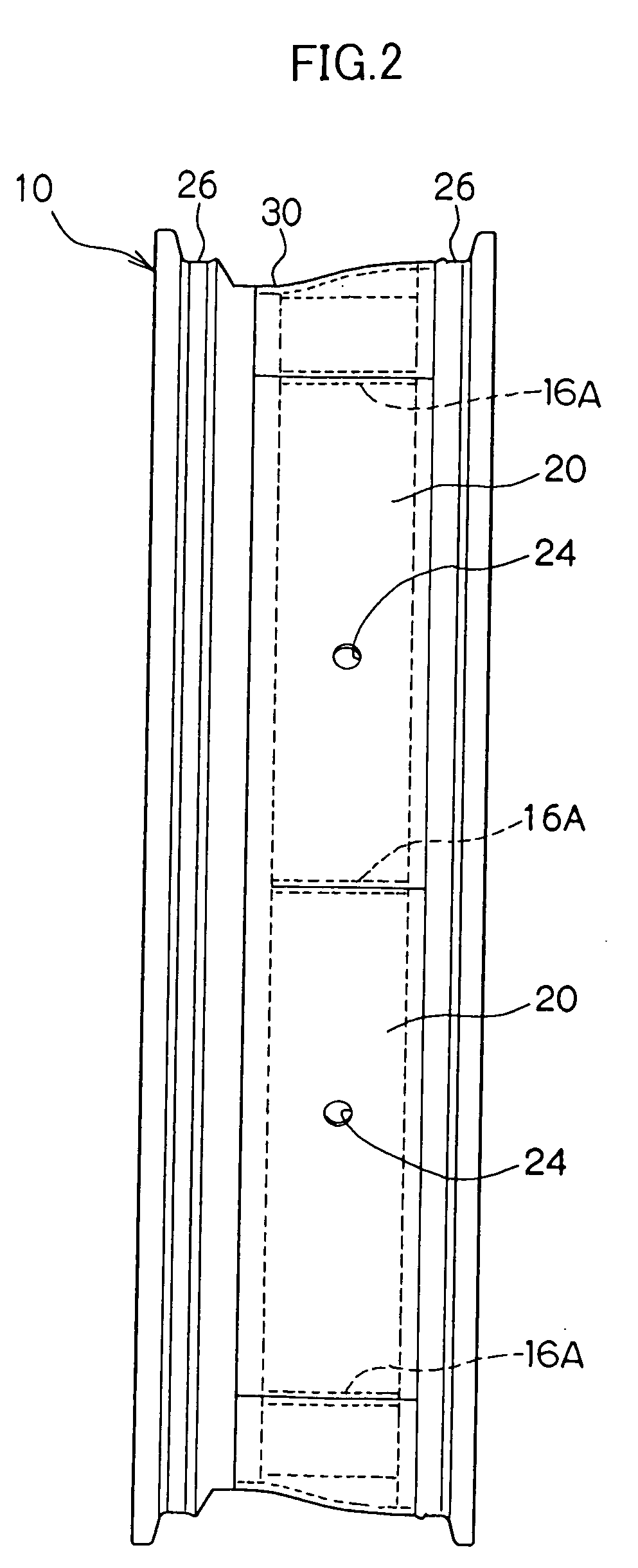Rim wheel, and tire-rim assembly
- Summary
- Abstract
- Description
- Claims
- Application Information
AI Technical Summary
Benefits of technology
Problems solved by technology
Method used
Image
Examples
example 2
[0246] the number of the diaphragms in Example 1 was changed to three. One communicating hole / air chamber was formed and had a diameter of 1.2 cm.
[0247] Comparative Example 1: the number of the diaphragms in Example 1 was changed to one, and communicating holes were arranged in the same way as in Example 1 (Namely, five communicating holes / air chamber were arranged with an equal distance therebetween in a rim circumferential direction).
[0248] Comparative Example 2: all of the diaphragms in Example 1 were removed and the product had continuous sub-air chambers in a rim circumferential direction. Communicating holes were positioned in the same manner as in Example 1.
[0249] Comparative Example 3: the number of the diaphragms in Example 1 was changed to two. One communicating hole / air chamber was formed and had a diameter of 1.7 cm.
[0250] In accordance with the aforementioned equation, a resonance frequency for each of Examples and Comparative Examples was set to about 250 Hz.
[0251] A ...
example 4
[0269] a diameter of the communicating hole in Example 3 was changed to 1.2 cm, and a resonance frequency was set to about 250 Hz.
[0270] Comparative Example 4: the number of communicating holes in Example 3 was changed to two per one air chamber (holes arranged at a distance of 10 cm from each other at a central portion in a circumferential direction of each sub-air chamber). Each communicating hole had a diameter of 1.1 cm, and a resonance frequency was set to about 330 Hz.
[0271] Comparative Example 5: the number of communicating holes in Example 3 was changed to three per air chamber (holes arranged at distances of 3 cm from each other at a central portion in a circumferential direction of each sub-air chamber). Each communicating hole had a diameter of 1.05 cm, and a resonance frequency was set to about 400 Hz.
[0272] A tire rim assembly using the thus manufactured wheel according to the present invention, and a tire rim assembly using an ordinary control wheel, were respectively...
PUM
 Login to View More
Login to View More Abstract
Description
Claims
Application Information
 Login to View More
Login to View More - R&D
- Intellectual Property
- Life Sciences
- Materials
- Tech Scout
- Unparalleled Data Quality
- Higher Quality Content
- 60% Fewer Hallucinations
Browse by: Latest US Patents, China's latest patents, Technical Efficacy Thesaurus, Application Domain, Technology Topic, Popular Technical Reports.
© 2025 PatSnap. All rights reserved.Legal|Privacy policy|Modern Slavery Act Transparency Statement|Sitemap|About US| Contact US: help@patsnap.com



